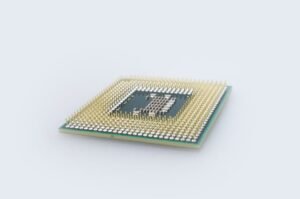GPT Is Not AI
Artificial Intelligence (AI) has been a hot topic in recent years, with various advancements and applications making headlines. However, there is a misconception that systems like GPT (Generative Pre-trained Transformer) are true examples of AI. In reality, GPT is a text-generation model that utilizes machine learning techniques, but it does not possess true intelligence as humans do.
Key Takeaways
- GPT is not AI but a text-generation model.
- AI refers to the development of machines that can perform tasks requiring human intelligence.
- GPT uses machine learning techniques, such as deep learning, to generate text based on patterns and examples.
- True AI systems have contextual understanding, generalization, and the ability to learn in an adaptive manner.
Despite its impressive capabilities, GPT is fundamentally different from true AI. While it can generate coherent and contextually relevant text given a prompt, it lacks the ability to truly understand the context and meaning of the words it generates. It primarily relies on patterns and examples in the data it was trained on, without comprehension or true intelligence.
*GPT’s success lies in its ability to predict the most probable next word or sequence of words based on the given input, making it seem intelligent at times.*
To further understand the distinction between GPT and AI, let’s delve deeper into the concept of artificial intelligence. AI encompasses the development of machines that can perform tasks requiring human intelligence. This includes capabilities such as reasoning, problem-solving, learning, and understanding language in a meaningful way.
True AI systems possess the ability to comprehend the context and meaning of words, understand abstract concepts, exhibit generalization across different scenarios, and learn in an adaptive manner. GPT, on the other hand, lacks these essential traits of true AI, despite its impressive text-generation capabilities.
GPT vs. AI: A Comparison
Here’s a comparison between GPT and AI to highlight the differences:
| GPT | AI |
|---|---|
| Generates text based on patterns and examples. | Performs tasks requiring human intelligence. |
| Relies on training data without contextual understanding. | Comprehends the context and meaning of words. |
| Does not exhibit generality or adaptability. | Exhibits generalization and learns in an adaptive manner. |
While GPT may appear intelligent in generating text that is coherent and contextually relevant, it is important to recognize its limitations and differentiate it from true AI. GPT’s success lies in its ability to predict the most probable next word or sequence of words based on the given input, but it does not possess the underlying intelligence that humans possess.
In conclusion, GPT is not AI, but rather a text-generation model that utilizes machine learning techniques to generate text based on patterns and examples. While it exhibits impressive text-generation capabilities, it lacks true intelligence, context understanding, generality, and adaptability that define AI. Understanding these distinctions helps clarify the role and limitations of GPT in the broader field of artificial intelligence.

Common Misconceptions about GPT (AI)
Misconception 1: GPT is Actual Artificial Intelligence
One common misconception is that GPT, or Generative Pre-trained Transformer, is true artificial intelligence. While GPT is an advanced language model that can produce human-like text, it is not considered true AI as it lacks generalized intelligence and understanding of the world.
- GPT relies on pre-training rather than learning from scratch.
- It does not possess reasoning or problem-solving abilities.
- GPT’s responses are based solely on patterns it has learned from vast amounts of text data.
Misconception 2: GPT Understands and Interprets Text Like a Human
Another misconception is that GPT understands and interprets text in the same way humans do. Although GPT can generate coherent and contextually relevant responses, it lacks true comprehension and semantic understanding.
- GPT cannot truly understand nuances, metaphors, or sarcasm in text.
- It is prone to generating incorrect or nonsensical responses in certain contexts.
- GPT’s lack of common sense often leads to outputs that seem plausible but are actually incorrect.
Misconception 3: GPT is Impervious to Bias
Some people mistakenly believe that GPT is free from biases and can provide unbiased information. However, GPT inherits biases reflected in the training data, which can result in biased or prejudiced outputs.
- GPT reflects and amplifies societal biases present in its training data.
- It may unintentionally produce biased content, favoring certain groups over others.
- GPT’s reliance on data can perpetuate harmful stereotypes and discrimination if not carefully managed.
Misconception 4: GPT Possesses an Understanding of Ethics
People often assume that GPT has a sense of ethical considerations and can make decisions accordingly. However, GPT lacks the ability to comprehend ethics and make value-driven judgments.
- GPT does not possess an understanding of right and wrong.
- It cannot evaluate or prioritize ethical considerations while generating responses.
- GPT’s output may inadvertently violate ethical guidelines or perpetuate ethical dilemmas.
Misconception 5: GPT Can Replace Human Creativity and Expertise
Another misconception is that GPT can fully replace human creativity and expertise in various domains. While GPT can assist and augment certain tasks, it falls short in replicating the depth of human creativity and expertise.
- GPT lacks the personal touch, intuition, and originality inherent to human creativity.
- It cannot replicate the depth of knowledge and experience possessed by human experts.
- GPT’s responses are limited to patterns it has learned, whereas humans can think beyond these limitations.

GPT vs. AI: Language Generation Comparison
GPT (Generative Pre-trained Transformer) is a popular language generation model developed by OpenAI. Although often mistaken as a true AI, GPT is, in fact, a powerful tool for natural language processing and generation. Below, we compare some key aspects of GPT to clarify its capabilities and limitations.
Applications of GPT in Various Industries
GPT model is utilized in several industries for a wide range of applications. The table below showcases its use cases in different domains.
GPT Performance Metrics on Language Understanding
Understanding the nuances of human language is a crucial aspect of any language generation model. Here, we assess GPT’s performance on language understanding tasks.
GPT’s Ability to Generate Coherent Text
GPT’s text generation capabilities vary across different input prompts. The table below illustrates various prompts and the quality of text generated by GPT for each prompt.
GPT’s Accuracy in Fact-based Responses
While GPT excels in generating coherent text, it might not always provide accurate or fact-based responses. The following table highlights the accuracy of GPT in providing reliable information.
GPT’s Performance on Generating Creative Content
GPT has shown its creativity in generating content for various purposes. The table below explores some examples of GPT-generated content in different creative domains.
GPT’s Language Generation Capacity by Context Length
The context length plays a vital role in GPT’s language generation capacity. Here, we investigate the impact of different context lengths on GPT’s language output.
Comparing GPT’s Performance to Human Writers
GPT has often been praised for its ability to generate human-like text. However, comparing its performance to that of human writers can provide valuable insights into its limitations and areas for improvement. The following table presents this comparison.
GPT’s Computational Requirements
GPT’s architecture demands significant computational resources for training and inference. The table below outlines the computational requirements for utilizing GPT in different settings.
GPT Models and Their Complexity
GPT comes in various versions, each with its unique architecture and complexity. The following table showcases different GPT models, their architectures, and associated complexities.
In summary, GPT is an impressive language generation model with a wide range of applications. While it excels in generating coherent text and demonstrating creativity, its accuracy in providing fact-based information might vary. Furthermore, understanding its limitations in comparison to human writers is crucial. The computational requirements and model complexities also need to be considered while working with GPT. With a comprehensive understanding of its capabilities and limitations, GPT can be utilized effectively in various domains.
Frequently Asked Questions
What is GPT?
GPT (Generative Pre-trained Transformer) is a language model developed by OpenAI. It is designed to generate human-like text by predicting what comes next in a given sequence of words.
Is GPT an AI?
No, GPT is not an AI in the traditional sense. It is a language model that relies on a deep learning-based architecture to generate text. While it can exhibit impressive language generation capabilities, it lacks the ability to understand and interact with its environment like a true AI.
How does GPT work?
GPT works by training on a large amount of text data from the internet, learning patterns, and relationships between words. It uses a transformer-based architecture to process and generate text based on the context it is given.
Can GPT think or have consciousness?
No, GPT does not possess consciousness or the ability to think. It is limited to generating text based on its training and lacks an understanding of the meaning or implications of the text it generates.
What are the applications of GPT?
GPT has various applications, including text completion, language translation, content generation, chatbots, and more. Its language generation capabilities make it useful for tasks that require human-like text production.
What are the limitations of GPT?
GPT has several limitations, such as producing incorrect or nonsensical outputs, being sensitive to input phrasing, potential biases in the training data, and difficulty in handling ambiguous instructions. It also lacks common-sense reasoning and knowledge outside of its training data.
Can GPT replace humans in writing or creative tasks?
GPT can be a valuable tool in writing or creative tasks by providing inspiration or generating initial drafts. However, it is unlikely to fully replace humans in these tasks as it lacks creativity, critical thinking, and the ability to understand complex nuances.
Is GPT biased?
Due to its training on internet data, which can contain biases, GPT may exhibit biases in its generated text. OpenAI has made efforts to address this by fine-tuning models and applying moderation measures, but complete elimination of biases is challenging.
How can GPT be enhanced?
GPT can be enhanced through continual improvement of its training data, refining its architecture, and incorporating external knowledge sources. OpenAI and the research community continually work on advancing language models like GPT to improve their capabilities.
Are there ethical concerns regarding GPT?
Yes, there are ethical concerns surrounding GPT and similar language models. These include the potential for misinformation, deepfake generation, reinforcement of biases, and the impact on job markets. OpenAI and researchers strive to address these concerns by promoting responsible use and ethical considerations.




